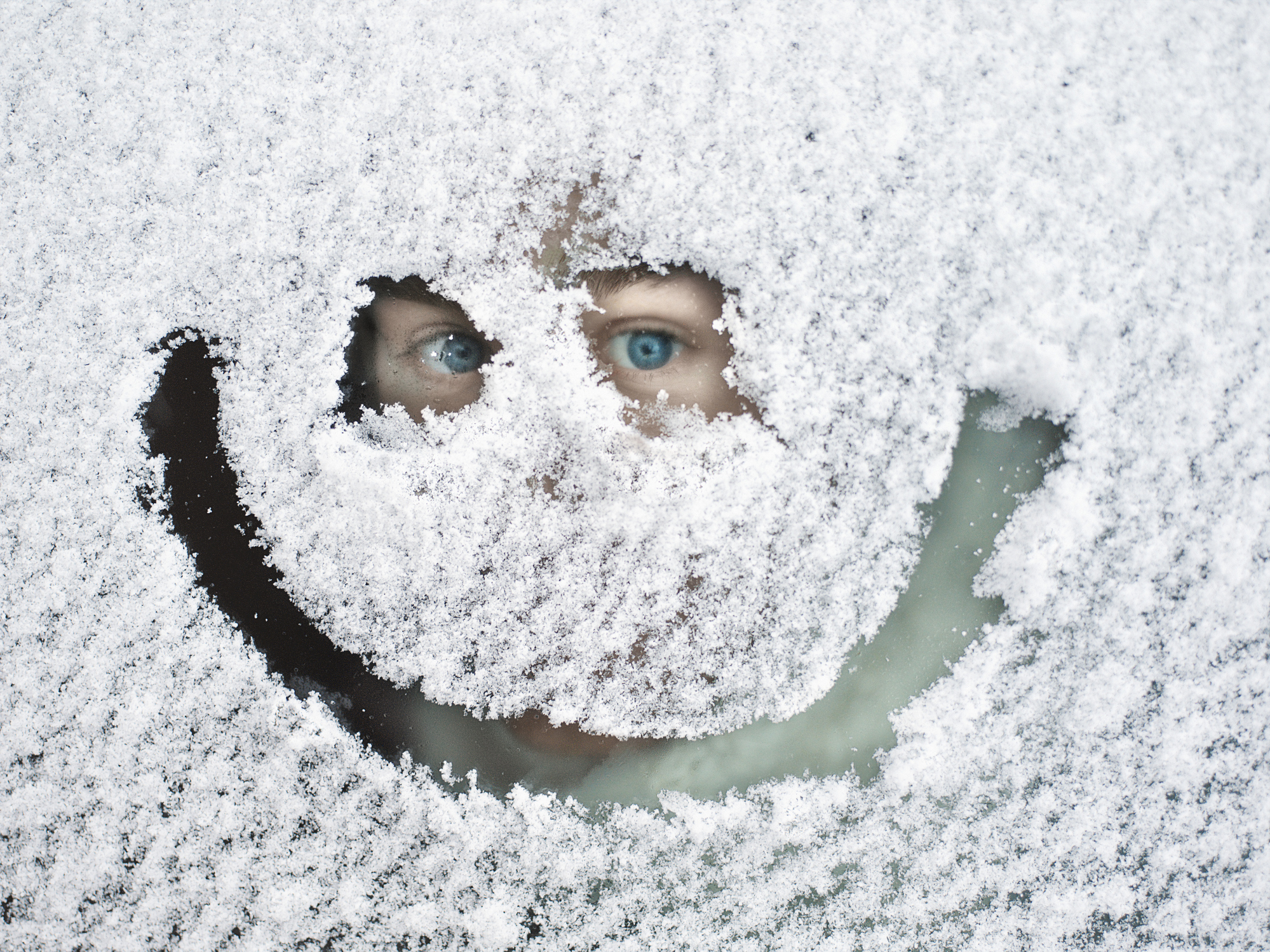
The days start getting longer and lighter after the winter solstice in late December, and yet the months after the holidays can seem endless. Is there a reason for feeling so depleted and down? And what can be done to lift your spirits? Read on to find out what to call these winter doldrums, and what you can do to bring light back into your life.
During the holiday season, you barely notice the days getting shorter and colder, as the family time, comfort food, and decked out storefronts bring excitement to the beginning of winter. But as soon as January hits, there’s nothing to distract you from the gloomy weather, lack of sunlight, and excess weight that the holiday feasting has left you with.
According to a PsychCentral article entitled Keeping Your Spirits Up When the Holidays End, “as many as 25 percent of Americans suffer from low-grade to full depression after the holidays.” Some possible causes of post-holiday depression are “unmet expectations, unrealistic resolutions, a return of loneliness, and guilt about overindulgence.” While some experts classify the Post-Holiday Blues as temporary mental distress rather than mental illness, in severe cases, if left untreated, these feelings can turn into chronic depression, especially for those with a history of the disorder.
Seasonal Affective Disorder (SAD)
Never was there a disorder with a more on-the-nose name than SAD. Seasonal Affective Disorder makes you feel, well, sad. Those who live farthest from the equator are most at risk, and symptoms include lack of interest in previously pleasurable activities, increased appetite, excessive sleepiness, weight gain, carbohydrate cravings, and tiredness.
According to Mental Health America, SAD is a subtype of depression or bipolar disorder. Symptoms usually start at the onset of autumn and continue through the winter months. It’s estimated that 1 in 5 Americans suffers from the condition, 75 percent of which are women.
SAD appears to be linked to two chemicals in the body, serotonin and melatonin. Reduced sunlight in autumn and winter may be responsible for lowering serotonin levels in our brains. Because serotonin is a “feel-good” compound, dips in this chemical are linked with low mood. Additionally, melatonin, a hormone that affects mood and sleep patterns, may be excessively produced in the winter, as its production increases in the darkness. This excess can interfere with our circadian rhythm, or “internal clock,” and alter sleep patterns, making us want to sleep whenever it’s dark out.
Cabin Fever
It’s so frigid outside you’d rather stay home and eat frozen pizza than bundle up just to go to the market. But you’ve been cooped up with your partner so long that every little thing they do annoys you. You alternate between feeling desperate to get out and wanting to hibernate until you hear the birds chirp the arrival of spring.
We’ve all heard the term “cabin fever,” anxiety or restlessness resulting from being housebound in the cold of winter, but is it a real thing? Reporter Michael S. Rosenwald of the Washington Post says yes, citing a 1984 study in the Journal of Social Psychology, “The Meaning of Cabin Fever.” According to the study, respondents expressed feelings of “dissatisfaction at home, restlessness, boredom, irritability, and needing to break routine.” Feelings of depression and moodiness in reaction to bad weather, isolation, and confinement were also reported.
How to Beat the Blues and Get Back to Your Old Self
Meditate
Meditation doesn’t have to be complicated. The simple act of sitting still, focusing on your breath, and attempting to clear your mind can bring positive results without the need to practice for hours a day. It’s important to remember that there is no “perfect” meditative practice. According to therapist Dr. Dori Gatter, meditation can help fight seasonal depression. She writes, “Not only does meditation have a positive impact on brain chemistry, much like exercise, it can also help you to gain perspective on stressful situations, as well as reduce the day-to-day stressors that may be contributing to your changes in mood.” Dr. Gatter says that just 20 minutes of practice a day can help you beat the winter blues.
Practice Gratitude
Here’s something that is free and easy: studies show that people who are grateful are mentally and physically better off. It seems too good to be true, but the benefits cited are less depression and anxiety, improved sleep and immunity, and even less chronic pain. To get started you can take a moment each day to observe something that made you smile recently, and then write down (or draw) anything you can feel thankful for. If you want some guidance, the Mayo Clinic Health System has a Discover Gratitude Program which has content resources and downloadable assets to help you track your gratitude.
Give Back
Did you know that altruism leads to happiness? Lending a hand to friends, donating to causes near to your heart, teaching a skill, spending time with the lonely, and celebrating important events with others are all ways you can help yourself by helping others. Studies show that those who give experience more feelings of satisfaction with their lives, and even live longer.
Use a Light Therapy Box
According to the Mayo Clinic, light therapy boxes can relieve symptoms of winter depression. They recommend that the box “provide an exposure to 10,000 lux of light, and emit as little UV light as possible.” In general, light boxes should be used within the first hour of being awake, for about 20 to 30 minutes a session, and at a distance of around 16 to 24 inches from your face. For guidance in choosing the best one for you, consult your doctor.
Faux Dawn: Just Add Roosters
Dawn simulators have also been found to help relieve symptoms of the winter blahs. These alarm clocks shine light that gradually increases in brightness and intensity, mimicking the morning sun and waking you gently. But do they work? A National Institute of Health study found that they do, concluding that “dawn simulation was associated with greater remission and response rates compared to the placebo.”
Move Out = Move & Get Out
You’ve probably heard this a million times but… exercise is good! Beyond your body, it helps the mind—exercise can bring relief and alleviate symptoms. Exercising outdoors is best: Not only do you reap the phototherapeutic benefits of the sun’s light, but sunlight sparks the natural production of vitamin D. Vitamin D deficiency has been linked with depression. Where you live and how well your body can absorb the sun’s rays will impact how much Vitamin D you get from the sun and there’s now a raging debate about how much Vitamin D we actually need. Of course you can overdo it on the supplements, so be sure to ask your doctor if you actually need it and how much.

In any event, rain or sun, going outdoors and into nature is shown to help mood. You don’t need to be a committed forest bather—you just need to get out. As we get our blood pumping, the body releases endorphins, or “feel-good hormones.” Running can even lessen food cravings and have a meditative effect on the brain, but any form of exercise will be beneficial.
Get Professional Support
As you can see, there are many lifestyle choices we can make to ease the blues or lessen anxiety. However, in some cases, depression and anxiety are more than we can handle on our own. If these feelings persist for more than two weeks, if you experience dramatic changes in sleep or eating patterns, if you feel violent or hopeless, or if you have any doubt about your mental or emotional health, talk to your doctor or get a referral to talk to a mental health specialist to learn if talk therapy or medication may be the answer.

